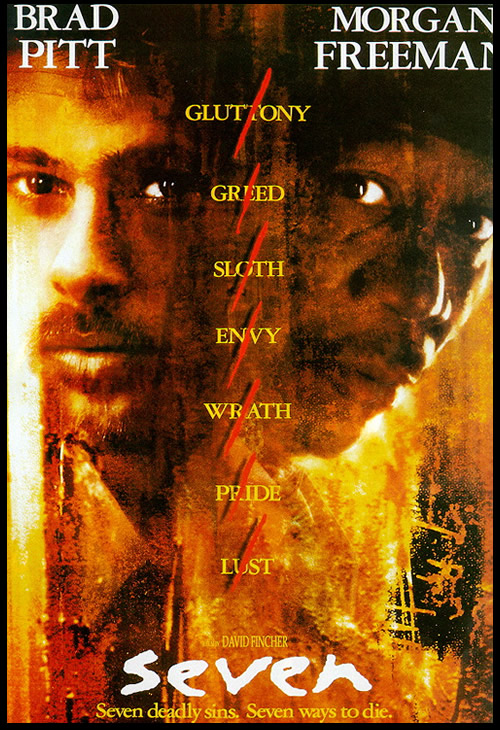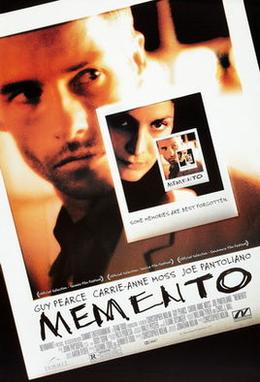If you remember, one of my first blog posts was an analysis of how suspense is created in a scene from
What Lies Beneath (see
here). This time I'll be analysing three key scenes from the classic horror
The Shining (1980), which we watched in class closer to the start of this unit of work. Reactions to the film were mostly positive and we agreed that there were quite a few scenes that stood out that were particularly suspenseful.
The first clip I will talk about is the baseball bat scene, where Wendy discovers the stack of typewritten pages that are covered with the proverb,
'All work and no play makes Jack a dull boy', repeating distressingly over and over. So what makes this scene so effective and suspenseful? It begins with Wendy cautiously walking and, baseball bat in hand, looking around. We can hear her footsteps and the gradual increase of a low chilling soundtrack;
'Jack?' she calls out. Everything about this scene has us in anticipation for what's to come. The camera follows her and is momentarily obscured by a wall of portraits, making us expect something sinister to appear on the other side... She stops. The camera cuts to a mid-close up with her back to the typewriter; slowly she approaches and the shot cuts again. This time we get a really interesting low angle shot looking up from the typewriter as Wendy enters the shot. The music starts getting darker with another shot of the camera directly zooming into the stack of papers. Whilst this should usually be avoided, in this scene it proves quite effective as the impact hits us, emphasizing the fact that Jack has gone mad. She frantically flicks through the pages, all the while we are on the edge of our seats, as Wendy's hysteria grows and grows. The camera cuts to the wall behind her creating an obstruction again, but this time we see the camera inching to the left, as if someone's watching her... all the while we know exactly who it will be.
Next is perhaps the most famous scene from
The Shining, which has had significant influence on pop culture. It is none other than the
'Here's Johnny!' scene. This is a short one compared to the other two, but what I thought was significant is how the 180 degree rule is actually broken here. Originally, Jack is on the right of the screen whilst Wendy is on the left behind the door. However, once he starts knocking down the door their positions on the screen switch, creating an intended feeling of disorientation for the viewer that makes the scene even more suspenseful and – dare I say – scary. With each swing of the axe and sound of the shattering door comes Wendy's screams of desperation, which keep us on edge throughout. The close-up of Jack's face through the broken door panels is one that is iconic, and for audiences then might have served as comic relief ('Here's Johnny'
was a catchphrase from
'The Tonight Show Starring Johnny Carson', a talk show that aired at the time), as well as further indication of Jack's loss of sanity. All in all, we are anxious to know what will become of Wendy and Danny at the hands of Jack.
Finally, there's the maze scene from towards the end of the film, which was the one that stood out the most for me and genuinely got me on the edge of my seat the most. The clip depicts Danny running from a rampant Jack. The scene is darkly lit, comprising of exterior shots at night. The mise-en-scène here already sets up a brilliant setting for a chilling horror scene. For the majority of the chase scene the two characters' figures are dark silhouettes across the snow which is immediately unnerving, or at least when it comes to Jack who is wielding an axe. As the camera follows Danny running in the maze, it feels very reminiscent of an earlier scene where he is on his tricycle riding through the Overlook Hotel's vast hallways.

That scene was another that was particularly suspenseful, creating a feeling of dread as we watched Danny turn the corners not knowing what could lie ahead (not to mention the contrasting sound of the tricycle going over from carpet to bare floor). This time it's different and it is as if the camera is Danny's assailant. As Danny turns the corners we just hope he doesn't come to a dead end... All while this is happening, we get cross cuts of Wendy inside the hotel who runs around manically with a knife (maybe Jack isn't the only crazy one...) and soon finds the dead body of Hallorann – more zooming here that, coupled with the sudden raucous soundtrack, gives a real feeling of shock. There's a few more little scenes of Wendy flailing about the hotel, including her encounters with several 'ghosts', but you know what to expect.
Now I'll end this by declaring that I never want to write about
The Shining again, goodnight!
Further reading:
•
http://www.dareland.com/kubrick.htm – fascinating.
•
http://adampolselli.com/2008/01/06/stanley-kubricks-editing-in-the-shining/ – analysis of Kubrick's editing in that tricycle scene.
 So in class we were told about a website called The Art of the Title, which is a 'leading web resource of film and television title design from around the world'. It has a wide variety of different title sequences which I'm already familiar with from my Graphics class (we briefly studied opening sequences). The opening for Catch Me If You Can (2002) is one that has got my attention for a while now. The overall Saul Bass aesthetic and brilliant soundtrack work perfectly together, whilst still getting the necessary information across: the distribution company, DreamWorks, displayed for six seconds; the studios, Splendid Pictures and Kemp Company for three seconds; producer details, 'A Parkes/MacDonald Production', another three seconds; and the director, Steven Spielberg, three seconds again... It is clear that the titles are actually quite fast-paced, and for good reason, as straight away we are immersed in this animated world of silhouettes and peculiar soundtrack that makes this opening even more mysterious. The film title appears 40 seconds in, for six seconds, then we're plunged straight back into the visual depictions of these two silhouettes in different cat and mouse-like chase sequences... Yet everything about these figures' movement is almost casual; it is all very intriguing and visually pleasing – the colours, the pacing...
So in class we were told about a website called The Art of the Title, which is a 'leading web resource of film and television title design from around the world'. It has a wide variety of different title sequences which I'm already familiar with from my Graphics class (we briefly studied opening sequences). The opening for Catch Me If You Can (2002) is one that has got my attention for a while now. The overall Saul Bass aesthetic and brilliant soundtrack work perfectly together, whilst still getting the necessary information across: the distribution company, DreamWorks, displayed for six seconds; the studios, Splendid Pictures and Kemp Company for three seconds; producer details, 'A Parkes/MacDonald Production', another three seconds; and the director, Steven Spielberg, three seconds again... It is clear that the titles are actually quite fast-paced, and for good reason, as straight away we are immersed in this animated world of silhouettes and peculiar soundtrack that makes this opening even more mysterious. The film title appears 40 seconds in, for six seconds, then we're plunged straight back into the visual depictions of these two silhouettes in different cat and mouse-like chase sequences... Yet everything about these figures' movement is almost casual; it is all very intriguing and visually pleasing – the colours, the pacing...











































